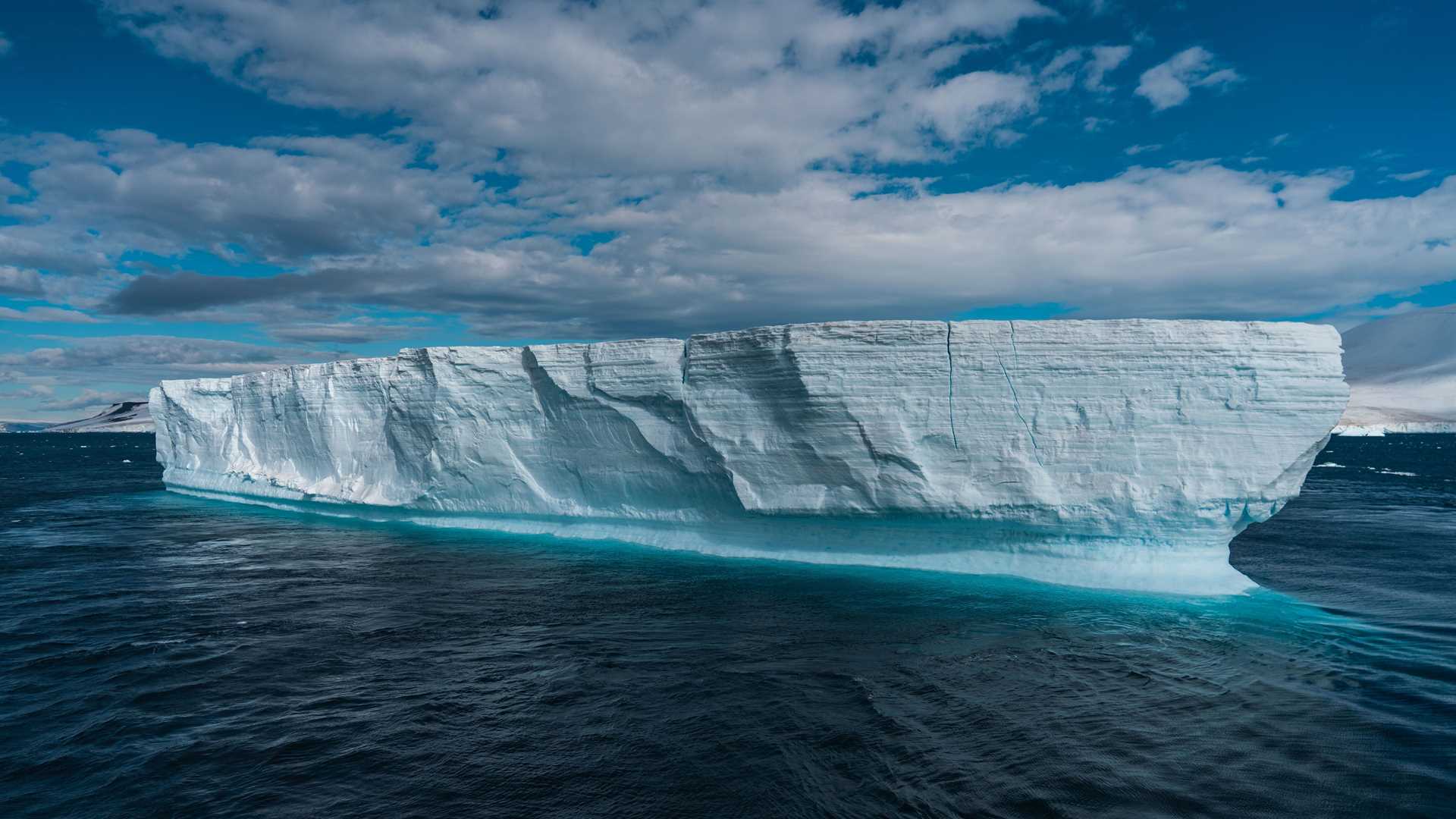Our morning began along the shores of Brown Bluff, a volcanic expanse of exposed rock surrounded by glacial ice and Adelie penguin nesting sites. We planned to explore the colonies and the ice on foot, but katabatic winds from the glacier’s face quickly reached 40 knots and made a landing impossible. This is an example of the mercurial weather of the Antarctic that, until now, we have avoided entirely. Instead, naturalist Michael Jackson shared about the site’s impressive geologic history from the bridge as we maneuvered toward an alternate landing in the Weddell Sea.
The captain navigated through a maze of towering tabular icebergs on our course to Paulet Island, our afternoon destination. Before we could reach the island, a crowd of spouts stopped us. As we approached, we realized the activity was not limited to one type of whale. We observed three different species of whales as they intermixed in a swarm of krill. Humpbacks, fin whales and killer whales were all busy swimming and feeding in the abundant icy waters of the Southern Ocean. An incredible sight, even for veteran members of the field staff.
By afternoon, we finally arrived to Paulet Island. We landed and explored the late stages of the Adelie nesting colonies. We observed creches of fledglings in their final stages of molting. The youngsters awaited their parents’ return with food from the open ocean, surrounded by thousands of adult fur seals making their way from breeding colonies on South Georgia. In addition to natural history, the island is also home to important aspects of the region’s cultural history. Journalist and storyteller Jenny Kingsley shared stories of stranded early explorers who overwintered on Paulet Island. The remains of the explorers’ hut still stands. Tomorrow, we will visit Elephant Island, where we will continue our exploration of stories from Antarctica’s “Heroic Age.”







